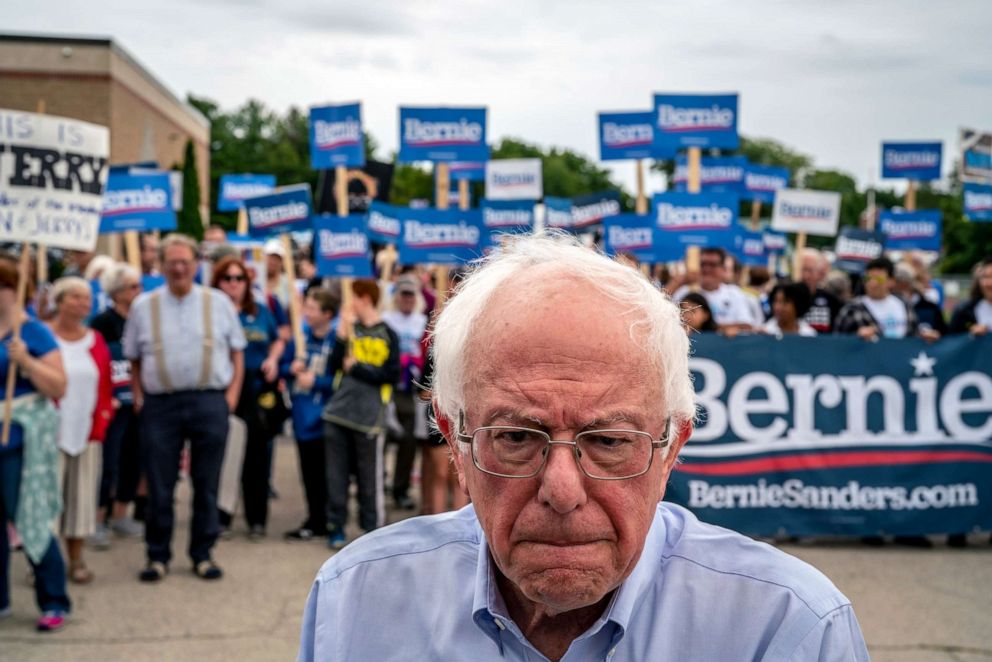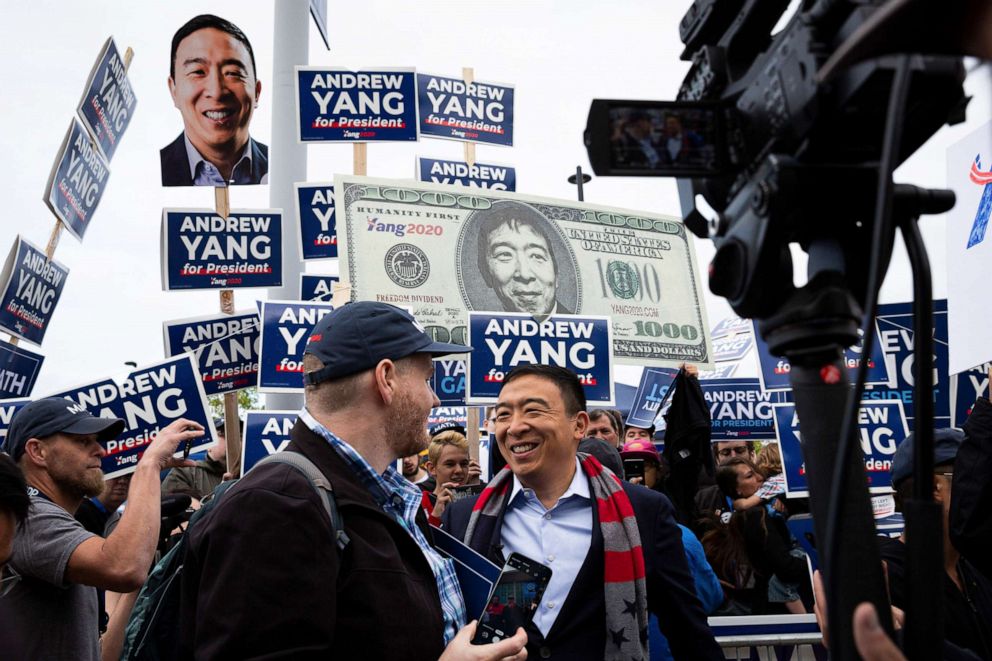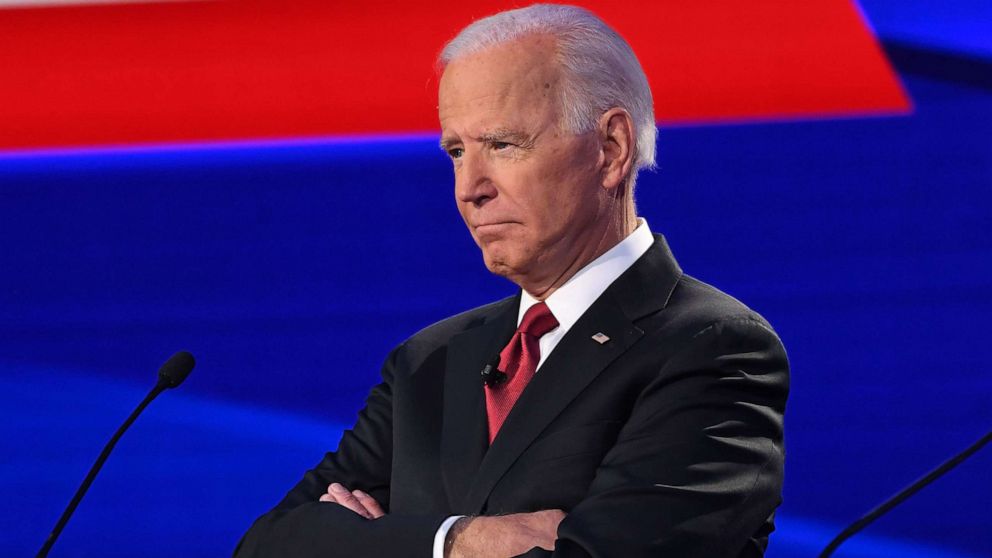Biden, most 2020 Democrats see red in 3rd quarter money race
Former Vice President Joe Biden outspent the amount he raised, about $6 million less than what he brought in last quarter, according to third quarter fundraising reports -- a key indicator of a campaign's viability to last in the grueling primary and a concerning financial turn for the veteran politician.
Biden is the only top-tier candidate in the red, ending the third quarter with only $9 million in the bank -- a troubling sign after spending $2 million more than he raised. His campaign spent a total of $17.7 million during the past three months, despite raising a lackluster $15.7 million -- nearly doubling his burn rate from the second quarter to 112% in the third.

Most alarming for Biden, who still maintains among the top tier in polling, is the relatively small size of his war chest compared to some of the other top-tier contenders, mainly Sens. Bernie Sanders, I-Vt., and Elizabeth Warren, D-Mass., who come out of the third quarter with $33.7 million and $25.7 million on hand, respectively.
The third fundraising quarter, which spans the months of July to September, drastically split the increasingly competitive Democratic field between a small cohort of top fundraisers flushed with cash, including Sanders, Warren and Mayor Pete Buttigieg of South Bend, Ind., and those who are seeing a relative cash flow shortage, among them, Biden and more than 10 other Democrats.
Warren, Sanders and Buttigieg enjoy a financial edge to outspend their Democratic rivals in Iowa, New Hampshire, Nevada and South Carolina, among the 19 Democratic contenders still in the race.
With only four short months before the first votes are cast in the Iowa caucuses, the focus on expensive early-state investments -- between boots on the ground, advertisements, and field organizing -- will only accelerate in the coming months, with pressure to continue an aggressive campaign operation leading into the nominating process mounting.
The high spending rates - and dips into savings - come as campaigns are increasingly jumping into the on-air ad battle, ramping up their digital operations and expanding staffing on the ground.
Much of the Biden campaign’s spending this quarter was on staffing -- nearly $7 million. The campaign also spent more than $2 million on online and television advertising and nearly $1 million on private jets.
But Biden’s campaign dismissed alarm bells about him trailing far behind his competitors, instead affirming their confidence in the former Delaware senator’s ability to "go long."
"I think we have the resources we need to run our race," Biden deputy campaign manager, Kate Bedingfield, told reporters in the spin room at Tuesday night’s debate. "It's more important how you spend the money than how you raise it. We have the resources we need to continue to run our race. We've always said that we think this race is going to be a dogfight, that it's going to go long. We're building an operation that is going to be sustained."
"So we are 100% confident that we have what we need to run our race," she added.
Even the former vice president struck an optimistic tone with reporters in Iowa Wednesday about his fundraising haul
"Our fundraising is building. We have raised a lot of money online, and we have raised money off line, as well," he said. "We feel confident we will be ready."

Leading the pack in fundraising this quarter are Sanders and Warren, whose campaigns are buttressed by massive grassroots armies after both raked in $25.3 million and $24.7 million respectively. The two progressive stalwarts also maintained lower burn rates compared to the rest of their Democratic rivals - a clear sign of their ability to amass sizable war chests, despite the fiercely competitive race over a year before election day.
Third quarter campaign finance records show Warren and Sanders’ campaigns spent $7.5 million and $7 million respectively on staffing and $3.8 million each on digital media production and online ad placement.
And Warren’s spending is expected to only increase in coming months.
Late last month, the Massachusetts senator announced an eight-figure plan to invest in television and online ads targeting early primary and caucus states including Iowa, New Hampshire, Nevada and South Carolina heading into the fall.
Warren’s campaign has yet to air her first television ad, but according to the ad service firm Advertising Analytics, the campaign has already reserved nearly $5 million worth of television airtime in the early months of 2020.
"I think it's telling that candidates like Warren have lower burn rates, since she has been rising in the polls and therefore might not feel the urgency that candidates like Biden feel, who are watching their poll numbers fall," said Sarah Bryner, a research director at the Center for Responsive Politics
Buttigieg, who fell short of his impressive $24.9 million second quarter fundraising haul this quarter, also burned through most of the $19 million he raised, marking a burn rate of 97%, a big jump from just 35% in the second quarter. The 37-year old mayor, still amassed $23.4 million in his bank, which will afford him more flexibility to invest heavily in the early states in the critical months ahead.
Buttigieg has been building up an aggressive ad campaign in recent weeks, topping other Democratic candidates on online advertising as well as dropping six-figure television ad blitz in early primary states.
Andrew Yang, the eccentric tech entrepreneur, who is notable for his freedom dividend proposal, more than tripled his fundraising in the third quarter, bringing in $10 million, and managed to maintain a distinguishable low burn rate below 44%, ending the quarter with a relatively strong cash on hand of $6.3 million among lower-polling candidates.
California billionaire Tom Steyer, who took the debate stage for the first time on Tuesday, appears to be walking his own path. The financier-turned activist, who pledged to spend $100 million of his own money for his presidential run, poured $47.6 million of his own money into his presidential campaign and spent more than $47 million of it just in the first three months. He raised just a little more than $2 million from contributions, and ended the quarter with $2.6 million in the bank.

Beyond the top candidates, Biden is not alone in falling behind in the money race.
Another prominent Democrat who burned through much more than she raised this quarter, is California Sen. Kamala Harris, who spent $14.6 million while only raising $11.8 million - producing a burn rate of 125%. Harris, who started her presidential campaign months earlier than Biden, maintained a burn rate of below 65% in the previous two quarters. She ends with $10.5 million cash on hand.
After Harris, the rest of the Democrats who appeared on Tuesday night’s debate stage finished out the third quarter with less than $7 million in the bank - and nearly all of them are spending far faster than they are bringing in, including Sen. Cory Booker, D-N.J., Sen. Amy Klobuchar, D-Minn., former Rep. Beto O’Rourke, D-Texas, Rep. Tulsi Gabbard, D-Hawaii, and billionaire Tom Steyer.
Former Housing and Urban Development Secretary Julián Castro, author Marianne Williamson and former Congressman Joe Sestak, D-Penn., covered their spending with the amount raised but the three have very little cash in the bank -- Castro for example only has $672,333 -- to support their campaign for the long haul.
Between the third and fourth quarter filing deadline at the end of the year, some expect the field to narrow - as the limits of cash-strapped campaigns put more pressure on an already winnowing primary.
"I suspect that what is happening right now is that the candidates are sensing that the field will winnow quickly, and now is their best chance to remain relevant," Bryner said. "Once the field narrows, the fundraising pool will open up for those candidates who remain, and I think that candidates are depending on that."




